
By Mx Kris Vyas-Myall
I was asked by our esteemed editor to explain the issues going on in Northern Ireland today, having seen it reported in the American Press. He noted:
If I'm getting it in my podunk local rag several days in a row, it's news.
And, honestly, it is even surprising to see the Six Counties mentioned in the UK press. Although most people are vaguely aware it is part of the country, and may have heard of the discrimination going on from such documentaries as The Orange and The Green, it probably occupies no more daily thought than the situation in South Texas occurs to the average Seattle housewife. In fact, the only discussion of the region I can recall from the first half of 1968 was whether any of the new coinage was going to have an Ulster logo on it.

Water supplies have been disrupted by explosions near Belfast
So, try to imagine one day turning on Walter Conkrite to see him telling you that barricades had been erected across San Antonio to keep the police out, bombs had gone off in Houston, Mexico had gone to the UN to ask for a peacekeeping force to be sent in and house representatives from the region were asking for the entire local government to be shut down.
That's an analogy. I am going to do my best to explain what is happening in specific. Whilst I will attempt to balance both sides’ views in this situation, even the basic choice of words is liable to inflame some people. As an example, my mother (English-born but from an Irish family and has lived in the Republic for many years) recently had her flight forced to land in Belfast rather than Shannon. She opined to the man in the seat next to her “you'd think they could get us an airport in the same country”. The man’s angry response was “I think you will find Belfast is in the same country!”
All this to say, apologies for any offence caused to readers.
A Pre-History
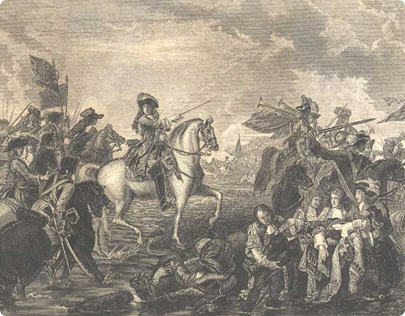
Illustration of the Battle of the Boyne, which cemented Protestant rule in Ireland.
The roots of the current issues weave incredibly far back, but I will attempt to be brief. Since the Middle Ages, the English crown had attempted to gain control of its neighboring Island. This process was slow and the Hiberno-Norman Lords operated with a largely free hand, meaning that 400 years after the start of the process the majority of Ireland was still nominally independent.
During the Tudor and Stuart periods, the Anglo-Scottish governments attempted to gain more centralised control over Ireland. However, this was regularly rejected by many of the Irish inhabitants and was met with violence. A solution was seen in plantations, the giving of land to settlers at the expense of the native Irish farmers.
The biggest of these was James I’s plantation of Ulster. Following the Nine Years War and the subsequent fleeing of many Irish nobles, James gave land to new protestant British landholders, who were also banned from using any native labour and had to import British workers, predominantly Scottish Presbyterians and English Anglicans.
Via a combination of conflicts around religion in Britain (e.g. The Gunpowder Plot, The Civil War, The Glorious Revolution) and rebellions against these settlements in Ireland, the Catholic Irish’s landholding and political power was almost completely removed. As such, there ended up a situation of minority rule, somewhat equivalent to British colonies in the Caribbean.
With the removal of legal restrictions on Catholics in Britain in the 19th Century, steps were taken to attempt to ameliorate the situation in Ireland but it was slow going and regularly blocked by Unionist supporters, both through laws and with extra-legal violence. By the time the UK parliament finally passed a bill on the subject in 1920 the sides had become hardened.
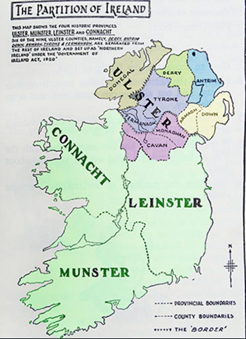
Map of Partition
The solution devised was for a partition of the Island, with most of Ireland being made the independent Irish Free State (now Republic) and the majority Protestant Six Counties of Ulster remaining part of the United Kingdom with a devolved parliament in Belfast. Whilst Sinn Fein took 97% of seats in the Irish parliament unopposed, the Ulster Unionists under James Craig won 77% of the seats in the North in election under STV (the Single Transferable Vote, a system by which a voter can rank their choices).
The early years of this new situation were not peaceful, with Civil War in the South and tit-for-tat sectarian killings in the North. Craig was determined to crack down on dissent and have “a Protestant Government for a Protestant People.” The police force was militarized, the electoral system changed, seats gerrymandered, and many other measures were put in place to keep what was already a Protestant controlled region firmly in that state.
The Silence Breaks
Whilst things still remained fraught for the Catholic population, the level of violence from before the Second World War was not as visible under Craig’s successor Basil Brooke. He was a hardliner allowing for little dissent, and the Irish Republican Army (IRA)’s border campaign in the late 50s did not gain much support in either region. (More on the IRA shortly.)
Instead, it was bigger world events that began to foment change. With the Civil Rights movement in America gaining publicity, organisations were formed in Northern Ireland to highlight anti-Catholic discrimination, such as the Campaign for Social Justice and Homeless Citizen’s League. At the same time an economic downturn in the region and Brooke’s ill health led to him resigning the premiership in 1963. He was succeeded by the more moderate Captain Terence O’Neill.

Now, it should not be thought O’Neill is some sort of radical republican. However, he did want to improve relations between the Catholic and Protestant communities of Ulster, and between the Northern and Southern parts of the island of Ireland. He encouraged twinning between organizations of both denominations and met the Irish Taoiseachs on multiple occasions.
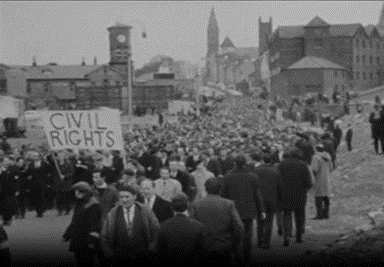
Following on from the CSJ’s publicising of wide-spread discrimination, a number of more active campaign organisations formed. Two of the most important are The Northern Irish Civil Rights Association (NICRA) and The Derry Housing Action Committee (DHAC). The former has been organising large scale marches calling for political reform, anti-discrimination legislation and demilitarisation of the police. DHAC is more particularly focussed on housing discrimination, taking part in sit-down protests and disrupting public meetings to get this message across.
Finally, all this took place against the backdrop of a change of British government, from Conservative to Labour. Whilst the Ulster Unionists caucus with the Conservatives in Westminster, Labour draws a significant share of its support from Catholics in Scotland and England. As such, it is much more in the interest of Wilson to encourage reform in Northern Ireland than it was for Macmillan. And with the passing of the Race Relation Acts in Britain it gave further impetus for change.
These factors have put the need for reform on the agenda, with O’Neill promising a move to one-man one vote, an ombudsman to address complaints of discrimination and the withdrawal of special police powers.
And overall, the vast majority of people had been happy with current progress. A pre-election survey at the start of the year showed 52% of Ulster voters thought improvements were being made at about the right pace (57% of Catholics and 49% of Protestants) with 62% supporting the principle of one man-one vote (92% Catholics and 48% of Protestants, with 20% in the latter group being unsure).
So, who could possibly be upset by these changes? Well, to start with, Home Affairs Minister William Craig and Rev. Ian Paisley.
The Policeman and The Priest
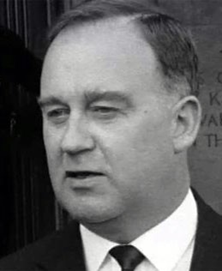
William Craig was a rising star in the Ulster Unionist government. Nicknamed ‘the battering ram’, he played a big part in the election of O’Neill to the post of Prime Minister, and had been a significant ally to him, in particular in the PM’s attempts at modernization of the Irish economy. After criticism from UUP colleagues of Craig’s cavalier attitude to planning policy and the need for O’Neill to take a stronger line against Republicanism, Craig was moved to Home Affairs, making him in charge of policing Northern Ireland.
Whilst not being totally opposed to some reform, Craig’s position is that discrimination claims and the civil rights movement are actually covers for radical republican activity. Their demands are purely designed to make them seem reasonable people, whilst they secretly seek a united republic of Ireland.

Outside of government, opposition to Civil Rights primarily centers around Reverend Iain Paisley. The leader of the fundamentalist Free Presbyterian Church of Ulster and close friend of Bob Jones, Jr., Paisley believes the Pope to be the Antichrist, with services commonly including the Hymn “Our Father Knew The Rome of Old and Evil is Thy Name”. Even though the actual congregation size of the Free Presbyterian Church is estimated to be small, Paisley has an outsized influence, regularly holding stunts such as heckling bishops who meet with Catholic counterparts and encouraging police to pull down Irish flags.
Paisley is no stranger to being in trouble with the law. In 1966 he was first arrested when, after contributing to a riot with a march he made through a Catholic area, he refused to be bound over to keep the peace. Then, in the same year, he was successfully sued for libel when he claimed the arresting police had committed perjury against him.
In November of last year, Craig banned all protest marches except for “customary marches”. By customary he was referring to those by Protestants like the Orange Lodge, making it seem like a discriminatory measure to stop Catholic Civil Rights marches. When DHAC and NICRA defied these orders, Paisley and his supporters showed up with counter-protestors and riots ensued. Even though Paisley was arrested for his part in this, Craig squarely put the blame on the Civil Rights movement, claiming the IRA were involved, and used special powers to call up police reinforcements. Following this and other public disagreements on policy, O’Neill called for his resignation.
What is their main problem? It is largely a slippery slope argument. They believe that Civil Rights will lead to Nationalist involvement in Government. This along with the growth of the Catholic population in recent years, may lead to one day a union of the North and South. This they see as both being a challenge to their own personal identity (as they see themselves as British rather than Irish, loyal to the Queen rather than a republic in Dublin) and a fear that they will be subject to Catholic law.
The Irish constitution states in Article 44 that the Catholic church has a “special position” in Ireland. Whilst this was an attempt to keep things secular whilst appeasing the Catholic majority, unionist critics point to the influence of the Catholic Church on policies in the republic such as the ban on divorce and birth-control. And whilst the situation is not as bad as in the North there have been cases of anti-Protestant discrimination in the South, such as the Mayo librarian controversy and the Fethard-On-Sea boycott.
But what do those on the other side want? Let us have a look at two of these groups, People’s Democracy and the Irish Republican Army.
The Grass Is Always Greener
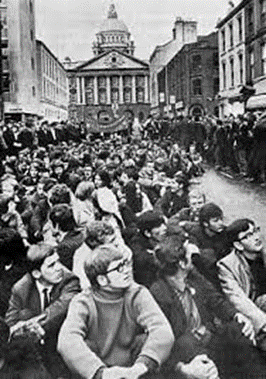
People's Democracy sit-down protest
Following the attacks on NICRA marches by the RUC and loyalists, People’s Democracy formed at Queen’s University Belfast at the end of last year. Whilst having a 5 point programme containing similar demands to the larger Civil Rights organizations, they believe that these can only be achieved in a united socialist republic of Ireland.
Whilst not engaging in violent activity, PD are also much less willing to back down in the face of political pressure. Whilst other civil rights agreed to a one month halting of marching in January in order to calm things down, People’s Democracy organized large scale marches throughout the North and refused to be rerouted away from Protestant areas by the police. These marches were ambushed throughout their routes by Loyalists, resulting in many injuries from protestors.
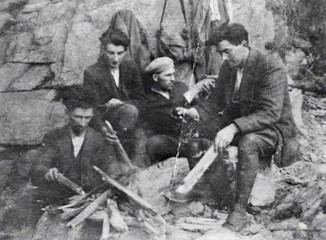
IRA members in 1922
Of course, People’s Democracy are not even close to the level of the IRA. This force began its existence just after World War I as a guerilla force fighting the British for Irish independence. During the Civil War the organization split between the pro-treaty Irish Free-State Army and the anti-treaty group who retained the IRA monicker.
In spite of their defeat in the Civil War and the later declaration of the Irish Republic, the organization has continued to exist up to the present day and ran an armed attempt to overthrow the government of Northern Ireland at the start of the decade. And, whilst the Border Campaign failed, they do not appear to be vanishing any time soon.
As an outlawed organization, details of IRA activities are hard to come by. However, there have been reports of recruitment drives for a “new IRA”, including bomb threats being called into the London Press Association by a purported member. One thing that seems sure, they have not lost any of their radicalism, as a member said to Ulster TV recently:
“I believe the British occupation can only be terminated by physical force”
This kind of statement underlines one of the real points of tension.
Yes, much of the population considers themselves British but they have been in the country for centuries. O’Neill can trace his family line back to the medieval kings of Northern Ireland and the Paisley name has been common in the region since the 17th Century. When Republicans regularly talk about ‘getting the British out’, many unionists fear they do not just mean a change of governmental administration, but want the wholesale expulsion or murder of people whose families were living in the region before the Mayflower crossed the Atlantic.
Things Fall Apart; The Centre Cannot Hold
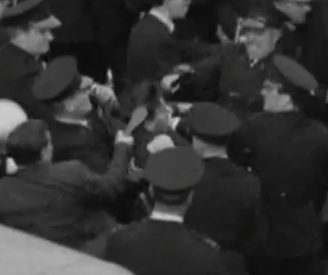
RUC dealing with a NICRA protester
In spite of opposition from left and right, O’Neill must have felt pretty confident at the start of the year. With Craig out of Government and Paisley heading to prison, it seemed the more reactionary voices were losing ground, whilst the biggest Civil Rights groups had agreed to suspend activity temporarily, and his reforms were proceeding through the Northern Irish parliament.
The problems started coming after the aforementioned clashes during the PD marches. The RUC made a heavy-handed attempt to keep the peace in the predominantly Catholic Bogside area of Londonderry. Community activists actually managed to drive the police out and erected barricades to control the area themselves. Even a radio station was established claiming to be the voice of “Free Derry.”
With this being seen by the Unionist authorities as a direct challenge to the Ulster government, crackdowns came swiftly. The plans to end the special powers act were reversed, calling up the paramilitary b-specials and O’Neill stated that there needs to be "less talk about Civil Rights and more talk about Civil Responsibility". Needless to say, this did not go down well with many in the movement.
However, the decline in social order happening at the same time as O’Neill was pushing through reforms was seen as rewarding the mob by some in his own party. Following two high-profile resignations and some calls from many of his other MPs to resign, the NI PM decided to call an election and take his mission to the voters. Pro-O’Neill candidates were the largest winners, taking 44% of the vote and allowing him to continue as Prime Minister. But, in a sign of things to come, Anti-O’Neill Unionists and Nationalists both got around 23% of the vote each.
During the negotiations for the passing of one-man one-vote, a series of bomb explosions took place around Northern Ireland taking out a church, water, and electricity supplies. In addition, firebombs destroyed nine post offices. No one has claimed responsibility for the attacks, with the RUC blaming the IRA, and the IRA claiming it is the Stormont authorities trying to:
“copy Hitler’s Reichstag fire stunt to…extend coercion and suppress free speech.”
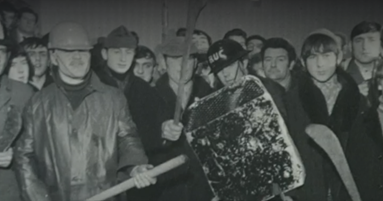
The community police in “Free Derry”
In response the government called up over 1000 B-specials and asked for British troops already stationed in Northern Ireland to guard key installations. The RUC came down heavily on anything they saw as disorder with the predictable response of barricades once again going up in Derry. Even with Paisley in prison, the loyalist response continued, with his wife declaring she was organizing loyalist volunteers to “assist” the police.
As newly elected Unity MP Bernadette Devilin told the House of Commons, it appears that Northern Ireland is at the start of a civil war. Discontent has moved past the point where it is purely about civil rights; now each side feels the other is untrustworthy and violent.
Some have posited the best solution would be to shut down the Northern Irish parliament and RUC, instead instituting a period of temporary rule from Westminster, with the British Army patrolling the streets instead. However, the lessons of fifty years ago are still foremost in many politicians’ minds, and they would no more wish to get involved directly on the island of Ireland again than they would like to send troops to Vietnam.
Another suggestion was made by the Irish government to the United Nations, to send in a peacekeeping force to administer the region. This did not get passed and probably did more harm than good. The Republic has never officially recognized the North as a separate country, and them trying to send in foreign soldiers reinforces the fears of Unionists that there is a conspiracy to annex Ulster.
And whilst O’Neill managed to get the one-man one-vote bill through the Northern Irish parliament, he was forced to resign by his party a few days later. His successor has promised to honour the former PM’s reforms, but, so far, the only response to the current crisis has been tighter laws and more police crackdowns.
The Calm, Preceding The Storm?

Change of direction, or just changing the drapes?
Although things have been quiet over the last month, this seems to be both sides assessing the new government. Simply replacing O’Neill with the mild-mannered Chichester-Clark is not actually resolving the underlying issues. One-Man, One Vote was only one part of the demanded reforms of the Civil Rights movement, but we see that any attempt to move further is likely to lead to strong reaction in some quarters.
Ulster Unionist MP Samuel Knox Cunningham recently told The Times that working with Nationalists was equivalent to:
“Hitler[‘s decision] to absorb Austria, the same solution was adopted and the coalition brought about the takeover of Austria. Let it be clear that the Unionists are determined to keep Ulster part of the United Kingdom and there will be no coalition with Republicans, Nationalists or another party with aims at overthrowing the constitution.”
Whilst Frank Gogharty, chairman of NICRA, stated at a recent meeting that Stormont reforms were:
“just a clever ploy by Unionists to split the movement…I expect the mailed fist to clampdown in six months…Stormont will move in and take most of the powers from local councils.”
At the same time, no measures have been put in place to placate any other underlying issues, unemployment sits a 7% in Northern Ireland, compared with 3.5% in the UK as a whole, with some predominantly Catholic areas like Derry seeing 1 in 5 working men without a job. Housing stock continues to be alarmingly short in the region. But the new regime has yet to announce any new economic schemes.

Unfortunately, this looks to only be temporary
As the marching season begins, attitudes harden and the economic situation looks to be worsening, I cannot see how the sunny weather can continue. Clouds are forming on the horizon and I worry that what happened in March will look like a playground scrap when the storm breaks.




![[June 22, 1969] Game Over (Doctor Who: The War Games [Parts 8-10])](https://galacticjourney.org/wp-content/uploads/2024/06/690622youremakingmegiddy-672x372.jpg)
![[June 20, 1969] Where to? (July 1969 <i>Fantasy and Science Fiction</i>)](https://galacticjourney.org/wp-content/uploads/2024/06/690620fsfcover_jpg-438x372.jpg)


![[June 18, 1969] Sleazy Riders (<i>The Sidehackers</i> and <i>Satan's Sadists</i>)](https://galacticjourney.org/wp-content/uploads/2024/06/Untitled-672x372.jpg)















![[June 16, 1969] The Voyage to Net a Dolphin (June 1969 Galactoscope)](https://galacticjourney.org/wp-content/uploads/2024/06/690616covers-672x372.jpg)






![[June 14, 1969] Boys and Girls From The North Country (The Conflict in Northern Ireland)](https://galacticjourney.org/wp-content/uploads/2024/05/Troubles-5.png)













![[June 12, 1969] Heavy on the Bitters (<i>Star Trek</i>: Turnabout Intruder)](https://galacticjourney.org/wp-content/uploads/2024/06/690610title-672x372.jpg)










![[June 8th, 1969] Dissension In The Ranks (<i>Doctor Who</i>: The War Games [Parts 5-7])](https://galacticjourney.org/wp-content/uploads/2024/06/690608nobodyinthisshothasacluewhattheyredoing-672x372.jpg)

![[June 6, 1969] Blue Skies (July 1969 <i>Amazing</i>)](https://galacticjourney.org/wp-content/uploads/2024/06/amz-0768-civer-490x372.png)







